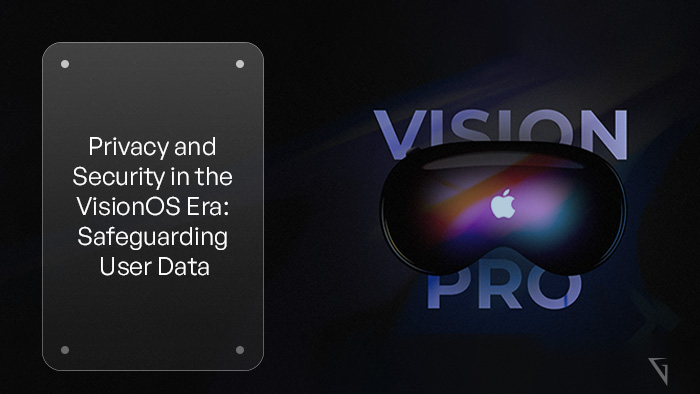As the visionOS era unfolds, Apple’s spatial computing platform brings new opportunities for immersive experiences. However, it is crucial to prioritize privacy and security to build trust with users and protect their personal information. In this blog, we will explore the importance of privacy and security in the VisionOS ecosystem and provide best practices for safeguarding user data.
Prioritizing User Privacy:
VisionOS places a significant emphasis on privacy, and it is essential for developers to align with this philosophy. Here are some key practices to prioritize user privacy:
- Minimize Data Collection: Only collect the necessary data to provide your app’s intended functionality. Avoid collecting personal information without a clear purpose or tangible benefit to the user.
- Transparent Data Usage: Clearly communicate to users how their data will be used and ensure that your app’s privacy policy is easily accessible. Be transparent about any third-party data sharing practices and obtain user consent when required.
- Appropriate Data Storage: Protect user data by encrypting it when it is not actively used by your app. Store data securely and follow Apple’s guidelines on data retention to limit data storage to what is necessary for your app’s functionality.
User Authorization and Consent
In cases where accessing sensitive information is necessary, apps on visionOS must receive explicit authorization from the wearer of the device. Consider the following:
- Clear Usage Descriptions: When requesting authorization for privacy-sensitive technologies, provide clear and concise usage description strings. These descriptions should explain why you need the data and how it will be used.
- Tangible Value Exchange: Ensure that when users provide their personal information, your app delivers real value in return. Users should perceive a clear benefit or enhanced experience as a result of sharing their data.
Secure Data Handling:
Protecting user data goes beyond collection and storage. Consider the following best practices:
- Secure Data Transmission: Utilize secure communication protocols (such as HTTPS) when transmitting user data between your app and backend services. Encryption ensures that data remains confidential during transit.
- Regular Security Audits: Conduct periodic security audits to identify vulnerabilities and ensure your app is protected against potential threats. Stay updated with the latest security practices and patches to address any identified vulnerabilities promptly.
Compliance with App Store Guidelines and Laws:
To maintain user trust and ensure compliance, follow these guidelines:
- App Store Review Guidelines: Adhere to Apple’s App Store Review Guidelines, which provide specific recommendations on privacy and security practices. Familiarize yourself with these guidelines and ensure your app meets the requirements.
- Compliance with Laws and Regulations: Stay informed about relevant privacy and data protection laws in your target regions. Ensure your app aligns with these regulations and respects users’ rights regarding their personal data.
Conclusion:
In the VisionOS era, prioritizing user privacy and security is paramount. By implementing best practices for data collection, user authorization, secure data handling, and compliance with guidelines and laws, you can safeguard user data and build trust with your audience. Remember that protecting user privacy is an ongoing commitment, and it is crucial to regularly review and update your privacy practices as technology evolves. By demonstrating a strong commitment to privacy and security, you can create a safe and trustworthy environment for users to enjoy immersive experiences on VisionOS .

